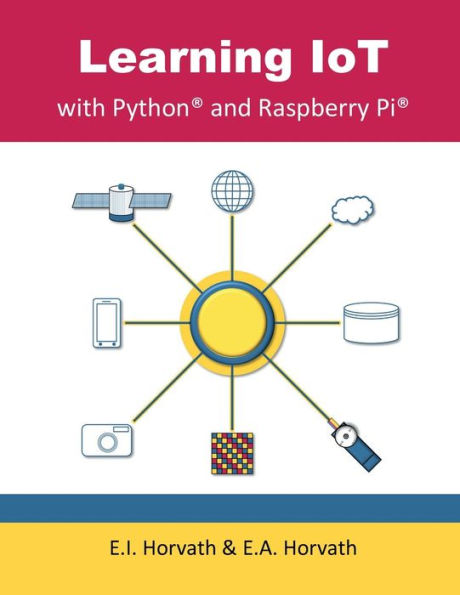- Code tested on the Raspberry Pi 3 and the new Raspberry Pi 4
- Color photographs and circuit diagrams
- 300+ code listings illustrate Python programming concepts
- 250+ homework problems ranging from short Python scripts to web site configuration projects
- Circuit examples
- Labs on measuring voltage, current, and resistance using a multimeter
- Send a text message if the light level detected by an LDR circuit falls below a threshold
- Send an email if motion is detected using a PIR sensor circuit
- Use an ultrasonic sensor in a proximity alert circuit and make a phone call if an intruder gets too close
- Use a GPS HAT to get waypoints and store them in a file
- Use an analog to digital converter to read in data from sensors
- Control a servo using classes
- Upload data to the cloud
- Learn how to access a database using SQL statements
- Deploy a home monitor system that uses the Raspberry Pi Camera and a PIR sensor circuit. Upload pictures to a web server in the cloud and access the pictures on a web page.
- Control a robot using a multi-threaded application
Developing applications that operate in the realm of the Internet of Things requires, in addition to the mastery of a programming language, an understanding of networking, an understanding of how to use different platforms, an understanding of basic electronic circuits, and a familiarity with databases. Owing to its built-in WiFi capability and its forty general-purpose input/output pins, the Raspberry Pi computer is the ideal device for teaching students how to write code that controls electronic circuits whether the code is executed from a keyboard attached directly to the Raspberry Pi or executed from a smart phone. One of the most popular programming languages in the world, Python, is installed with the Raspbian operating system.
- Code tested on the Raspberry Pi 3 and the new Raspberry Pi 4
- Color photographs and circuit diagrams
- 300+ code listings illustrate Python programming concepts
- 250+ homework problems ranging from short Python scripts to web site configuration projects
- Circuit examples
- Labs on measuring voltage, current, and resistance using a multimeter
- Send a text message if the light level detected by an LDR circuit falls below a threshold
- Send an email if motion is detected using a PIR sensor circuit
- Use an ultrasonic sensor in a proximity alert circuit and make a phone call if an intruder gets too close
- Use a GPS HAT to get waypoints and store them in a file
- Use an analog to digital converter to read in data from sensors
- Control a servo using classes
- Upload data to the cloud
- Learn how to access a database using SQL statements
- Deploy a home monitor system that uses the Raspberry Pi Camera and a PIR sensor circuit. Upload pictures to a web server in the cloud and access the pictures on a web page.
- Control a robot using a multi-threaded application
Developing applications that operate in the realm of the Internet of Things requires, in addition to the mastery of a programming language, an understanding of networking, an understanding of how to use different platforms, an understanding of basic electronic circuits, and a familiarity with databases. Owing to its built-in WiFi capability and its forty general-purpose input/output pins, the Raspberry Pi computer is the ideal device for teaching students how to write code that controls electronic circuits whether the code is executed from a keyboard attached directly to the Raspberry Pi or executed from a smart phone. One of the most popular programming languages in the world, Python, is installed with the Raspbian operating system.

Learning IoT with Python and Raspberry Pi
760
Learning IoT with Python and Raspberry Pi
760Paperback

Product Details
| ISBN-13: | 9780578549361 |
|---|---|
| Publisher: | Learning IoT LLC |
| Publication date: | 09/01/2019 |
| Pages: | 760 |
| Product dimensions: | 8.50(w) x 11.00(h) x 2.07(d) |
